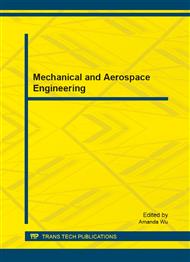[1]
J.B. Dugan, S. Bavuso, M. Boyd. Dynamic fault tree models for fault tolerant computer systems . IEEE Transactions on Reliability, 41(3): 363-377 (1992).
DOI: 10.1109/24.159800
Google Scholar
[2]
H. Boudali and J.B. Dugan. A Continuous-Time Bayesian Network Reliability Modeling and Analysis Framework. IEEE Transactions on Reliability, 55(1): 86-97 (2006).
DOI: 10.1109/tr.2005.859228
Google Scholar
[3]
J.B. Dugan, S. Bavuso and M. Boyd. Fault trees and Markov models for reliability analysis of fault tolerant systems. Reliability Engineering and System Safety, 39(3): 291-307(1993).
DOI: 10.1016/0951-8320(93)90005-j
Google Scholar
[4]
D. Codetta Raiteri. The Conversion of Dynamic Fault Trees to Stochastic Petri Nets, as a case of Graph Transformation. Electronic Notes in Theoretical Computer Science, 127(2): 45-60 (2005).
DOI: 10.1016/j.entcs.2005.02.005
Google Scholar
[5]
M. Walker and Y. Papadopoulos. Pandora: The time of priority-AND gates. In Proceedings of the 12th IFAC Symposium on Information Control Problems in Manufacturing (INCOM 2006), pages 237–242, Saint-Etienne, France (2006).
DOI: 10.3182/20060517-3-fr-2903.00134
Google Scholar
[6]
M. Walker and Y. Papadopoulos. Qualitative temporal analysis: Towards a full implementation of the Fault Tree Handbook. Control Engineering Practice, 17(10): 1115-1125 (2009).
DOI: 10.1016/j.conengprac.2008.10.003
Google Scholar
[7]
G. Merle. Algebraic modeling of Dynamic Fault Trees, contribution to qualitative and quantitative analysis, PHD thesis, LURPA, ENS de Cachan (2010).
Google Scholar
[8]
G. Merle, J. -M. Roussel, J. -J. Lesage. Algebraic determination of the structure functions of Dynamic Fault Trees. Reliability Engineering and System Safety, 96(2): 267-277 (2011).
DOI: 10.1016/j.ress.2010.10.001
Google Scholar
[9]
D. Liu, W. Xing, C. Zhang, and et al. Cut sequence set generation for fault tree analysis. In: Proceedings of 2007 International Conference on Embedded Software and Systems (ICESS 2007), Daegu, South Korea, 14-16 May 2007, LNCS 4523, 58-69 (2007).
DOI: 10.1007/978-3-540-72685-2_28
Google Scholar
[10]
D. Liu, X. Wei, L. Zhi. The simplification of cut sequence set analysis for dynamic systems. IEEE. The 2nd international conference on computer and automation engineering, ICCAE 2010. Singapore: 140-144 (2010).
Google Scholar
[11]
W.E. Vesely, M. Stamatelatos, J.B. Dugan. Fault tree handbook with aerospace applications. NASA Office of Safety and Mission Assurance, USA . August: 157-161 (2002).
Google Scholar


